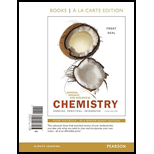
Concept explainers
a.
To determine:
ATP molecule production in
Introduction:
ATP is generated in various
b.
To determine:
The number of ATP obtained from
Introduction:
ATP is generated in various metabolic reactions and respiration. ATP generation is required as the energy source. Every molecule taking part in various metabolic reaction generates some amount of energy, some are in the form of NADH and FADH2, but ultimately these are also converted into ATP.
c.
To determine:
The ATP production in
Introduction:
ATP is generated in various metabolic reactions and respiration. ATP generation is required as the energy source. Every molecule taking part in various metabolic reaction generates some amount of energy, some are in the form of NADH and FADH2, but ultimately these are also converted into ATP.
d.
To determine:
The ATP produced from the
Introduction:
ATP is generated in various metabolic reactions and respiration. ATP generation is required as the energy source. Every molecule taking part in various metabolic reaction generates some amount of energy, some are in the form of NADH and FADH2, but ultimately these are also converted into ATP.
Want to see the full answer?
Check out a sample textbook solution
Chapter 12 Solutions
General, Organic, and Biological Chemistry, Books a la Carte Edition (3rd Edition)
 Chemistry for Today: General, Organic, and Bioche...ChemistryISBN:9781305960060Author:Spencer L. Seager, Michael R. Slabaugh, Maren S. HansenPublisher:Cengage Learning
Chemistry for Today: General, Organic, and Bioche...ChemistryISBN:9781305960060Author:Spencer L. Seager, Michael R. Slabaugh, Maren S. HansenPublisher:Cengage Learning General, Organic, and Biological ChemistryChemistryISBN:9781285853918Author:H. Stephen StokerPublisher:Cengage Learning
General, Organic, and Biological ChemistryChemistryISBN:9781285853918Author:H. Stephen StokerPublisher:Cengage Learning Organic And Biological ChemistryChemistryISBN:9781305081079Author:STOKER, H. Stephen (howard Stephen)Publisher:Cengage Learning,
Organic And Biological ChemistryChemistryISBN:9781305081079Author:STOKER, H. Stephen (howard Stephen)Publisher:Cengage Learning,



